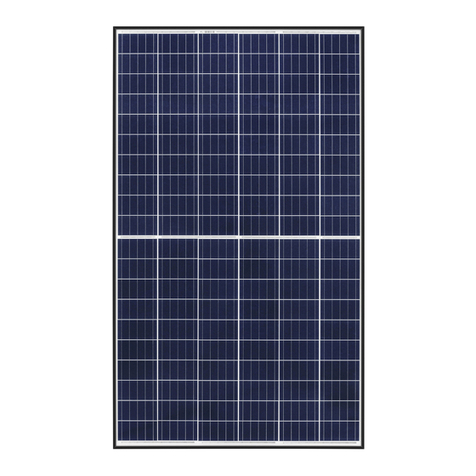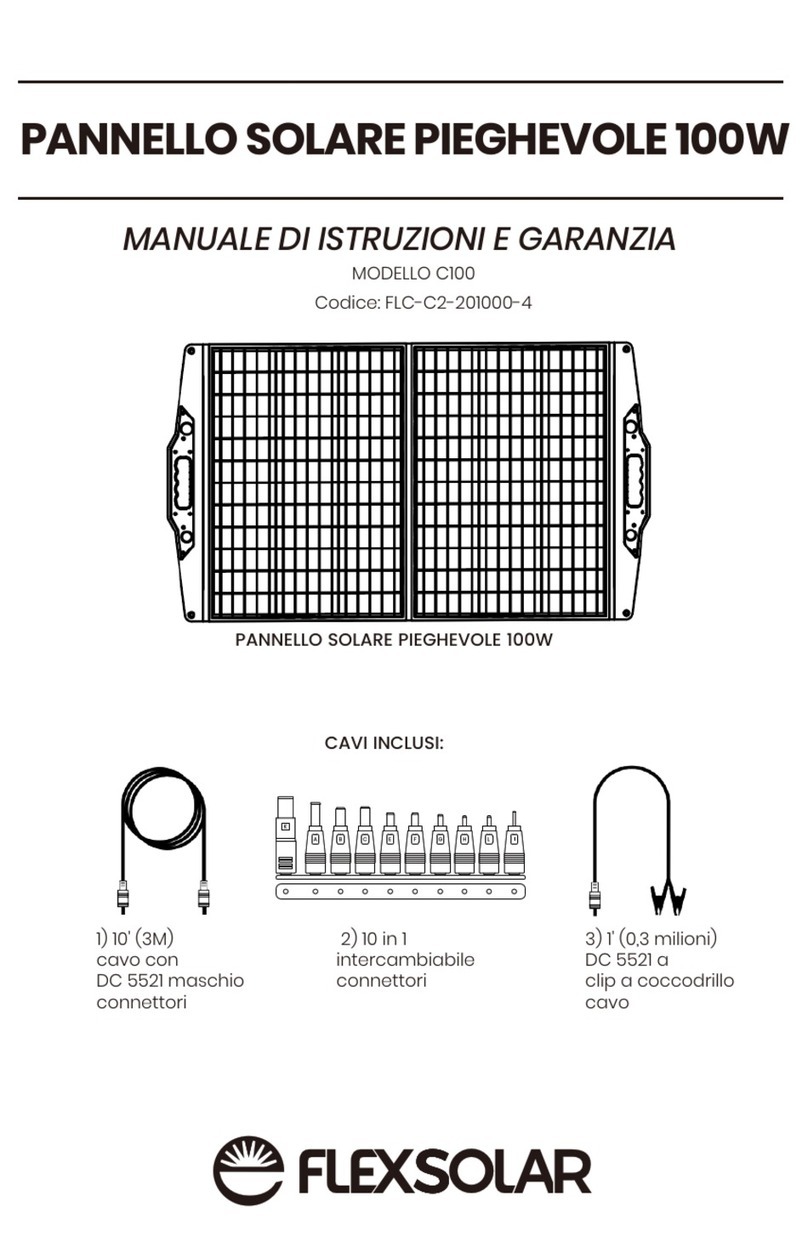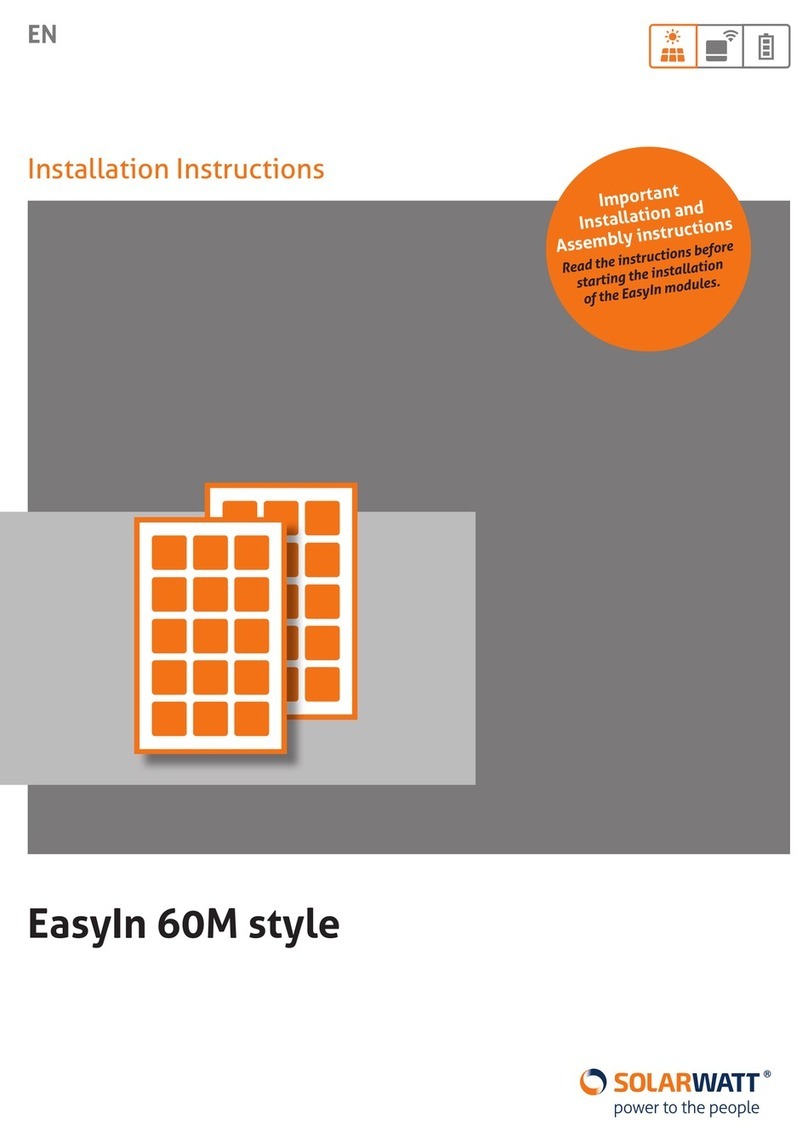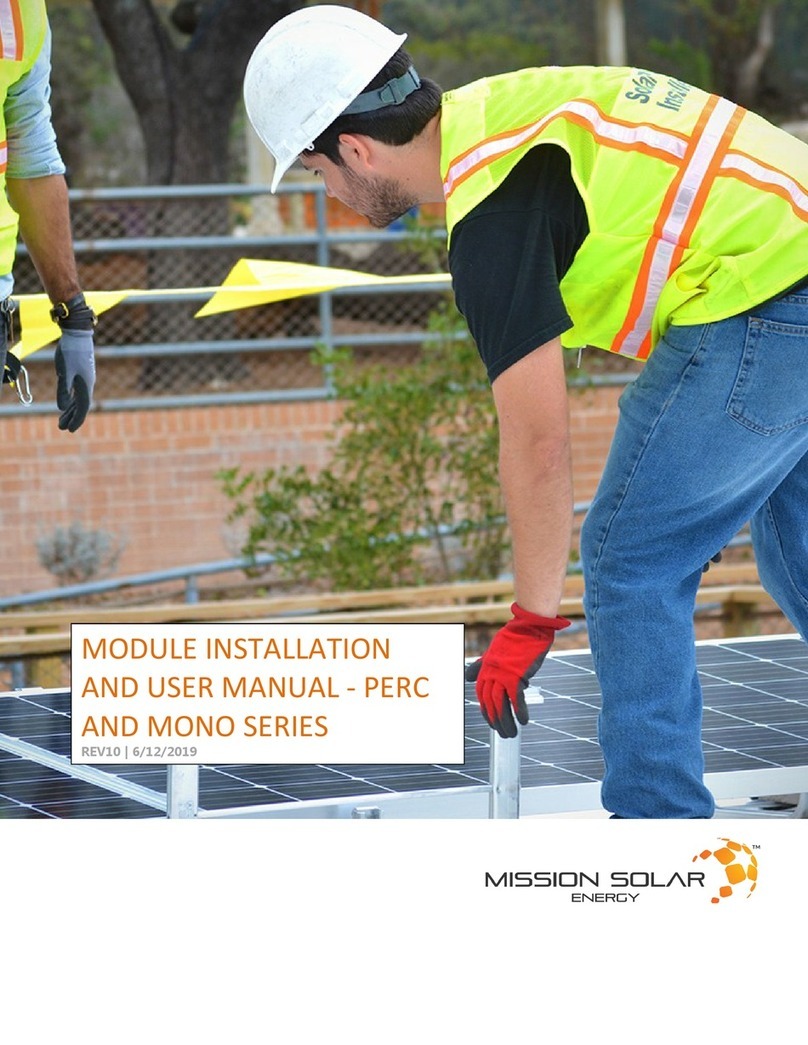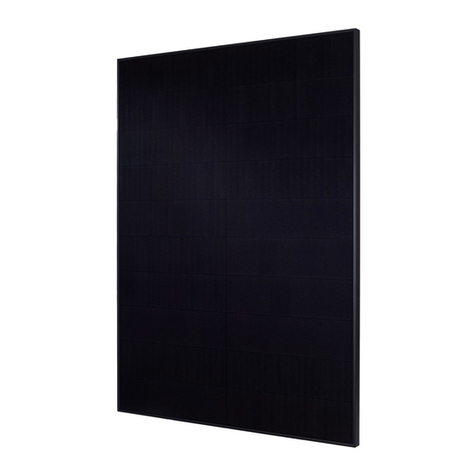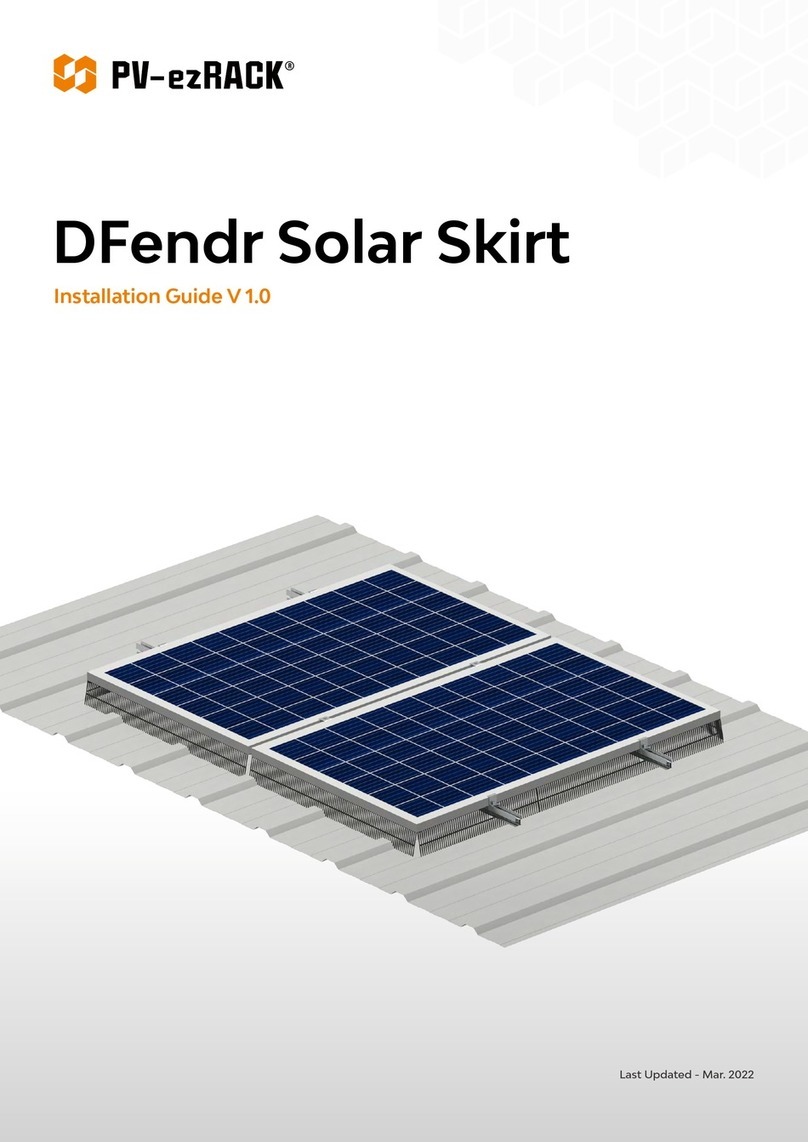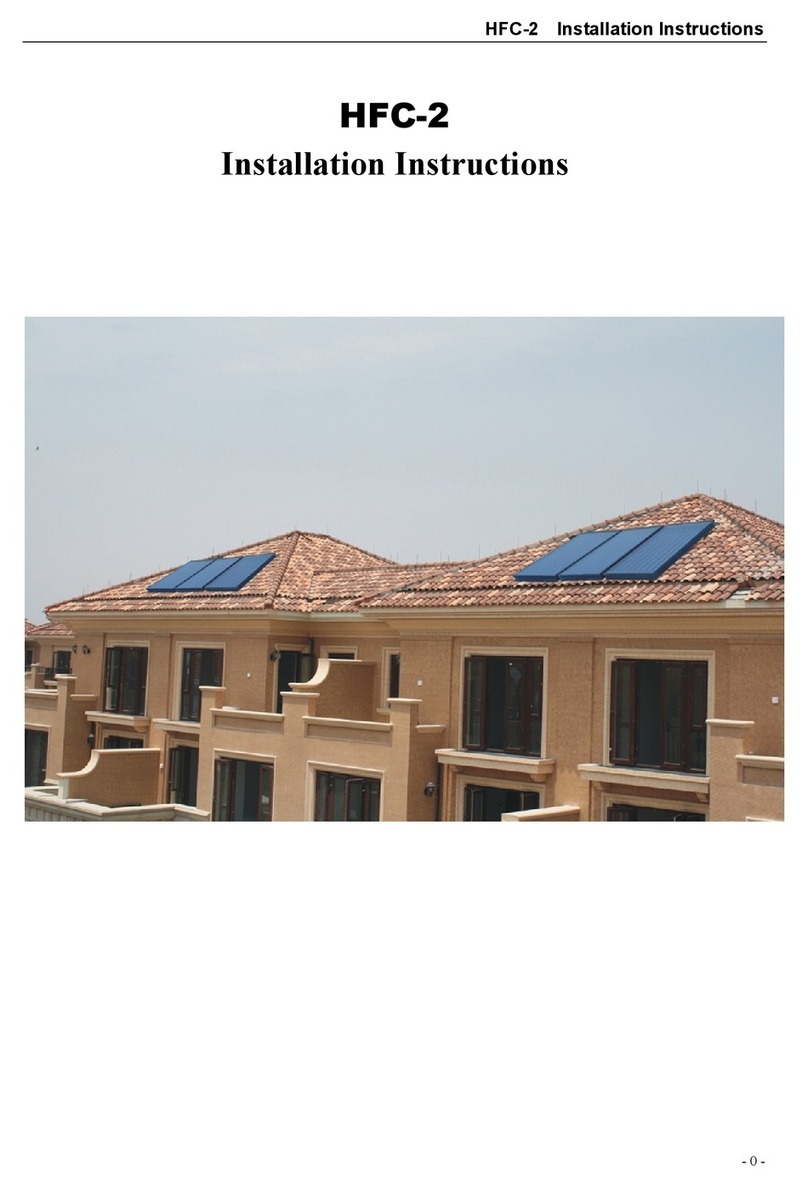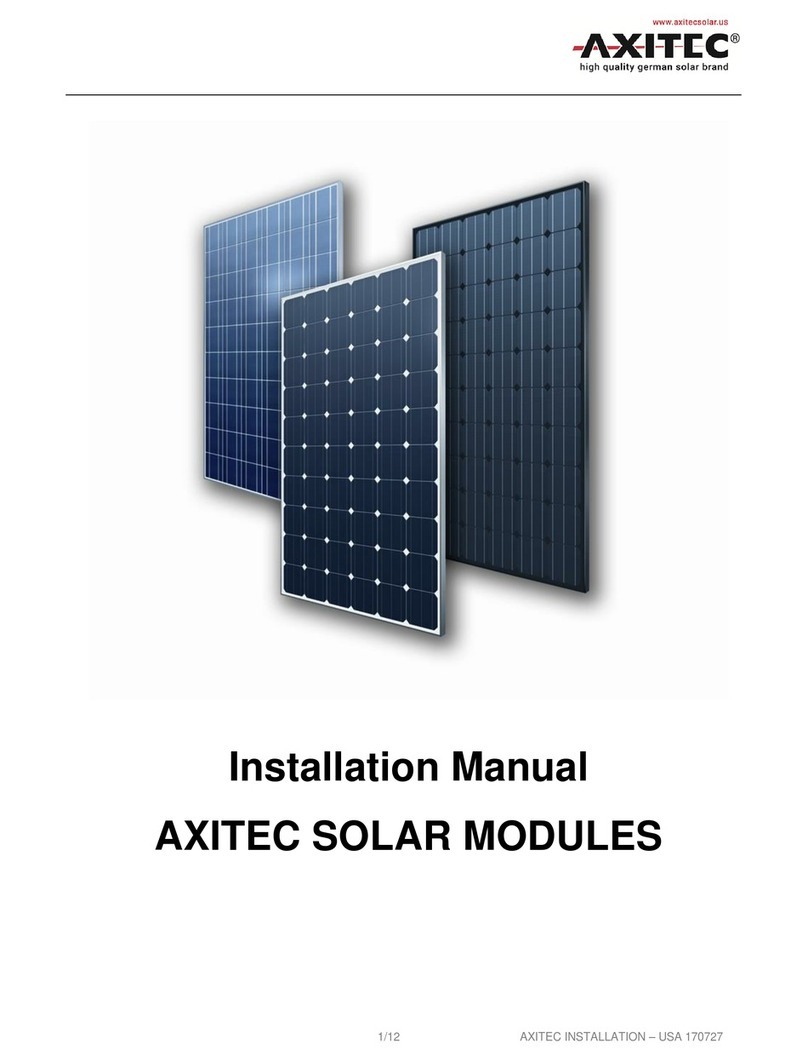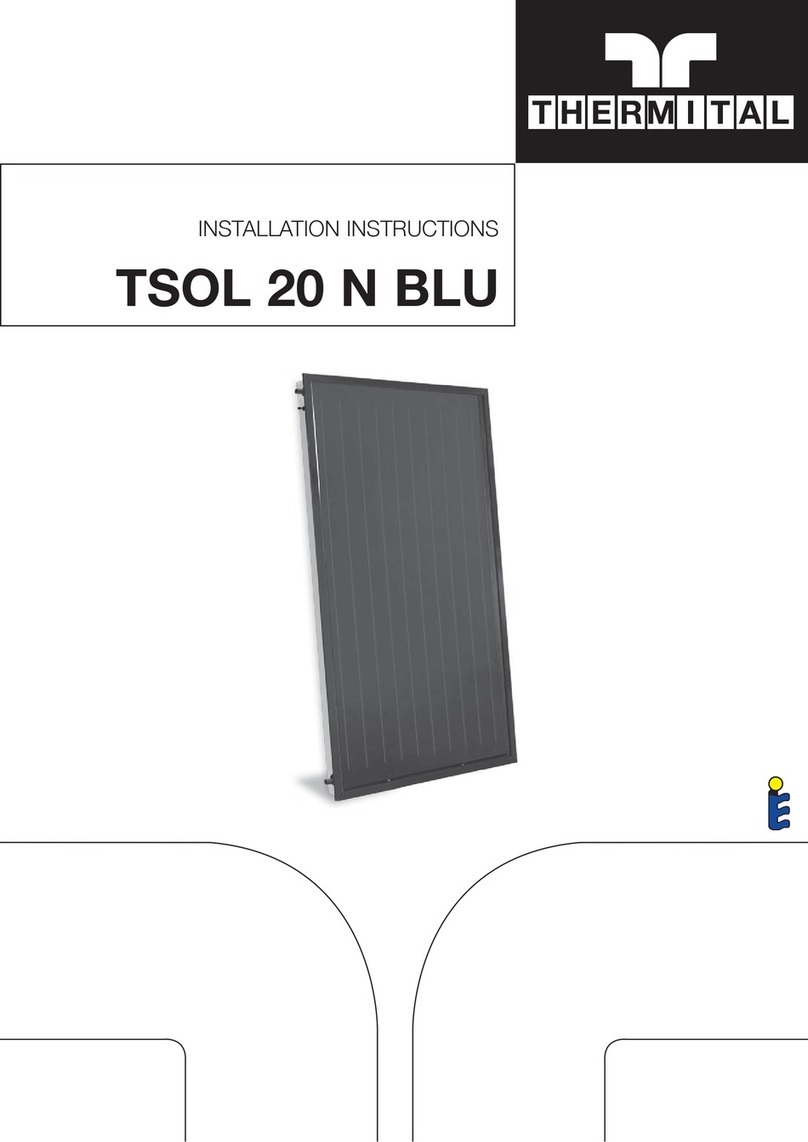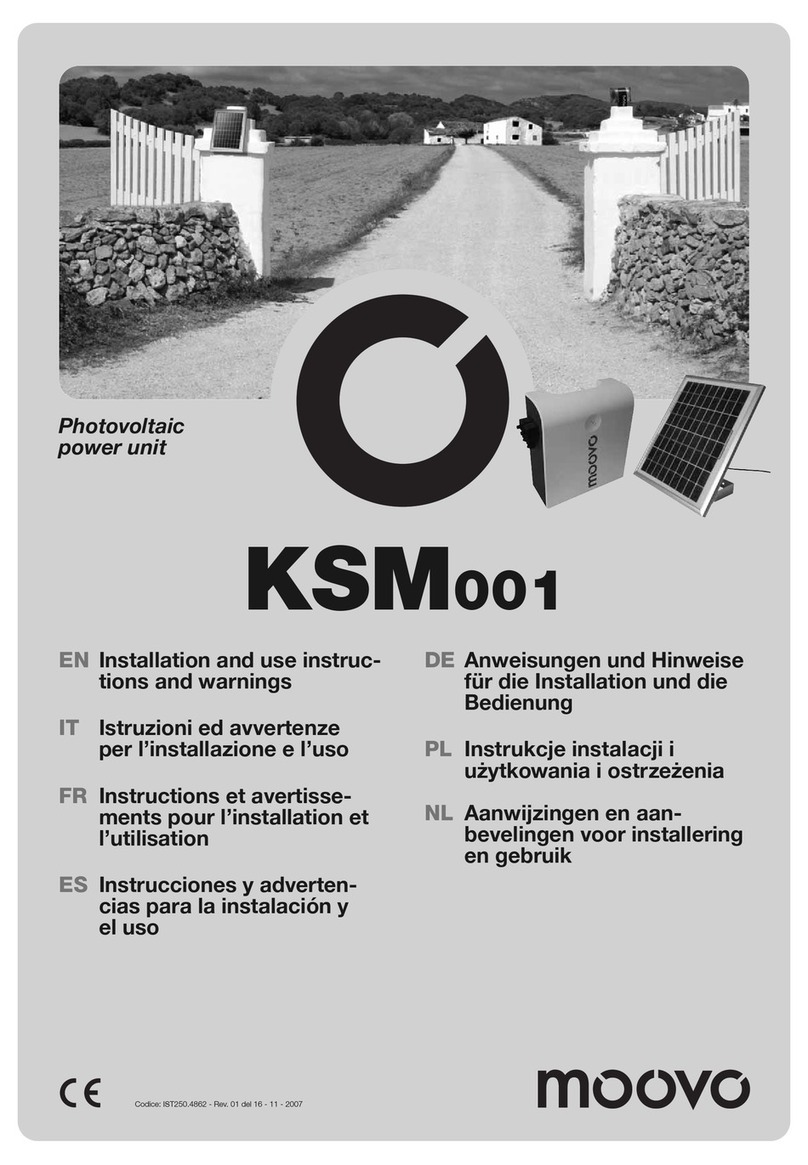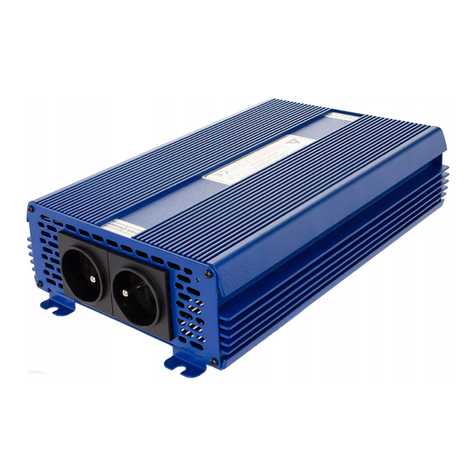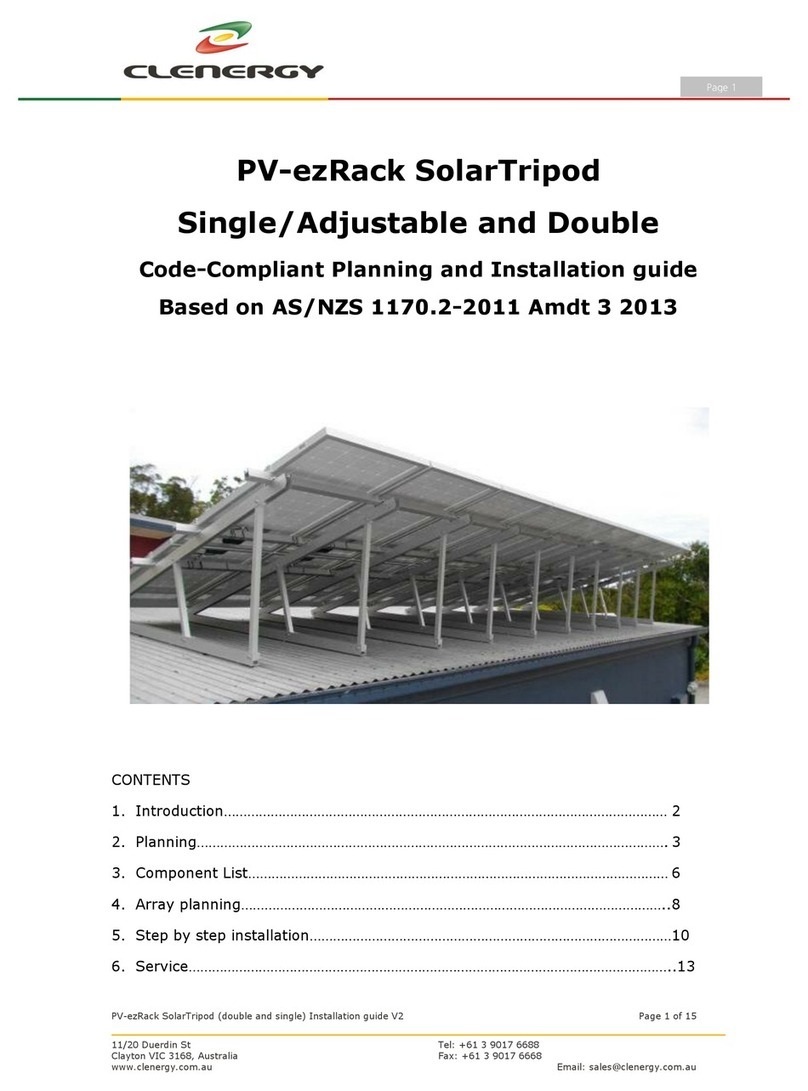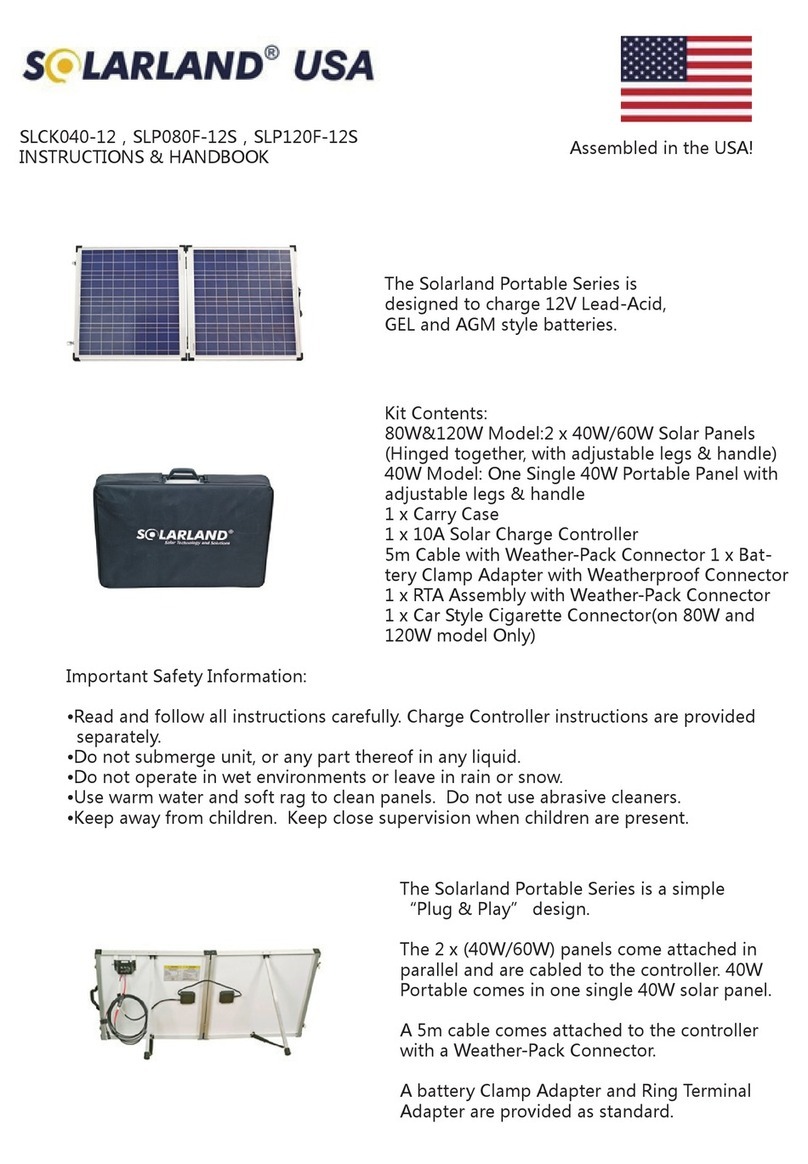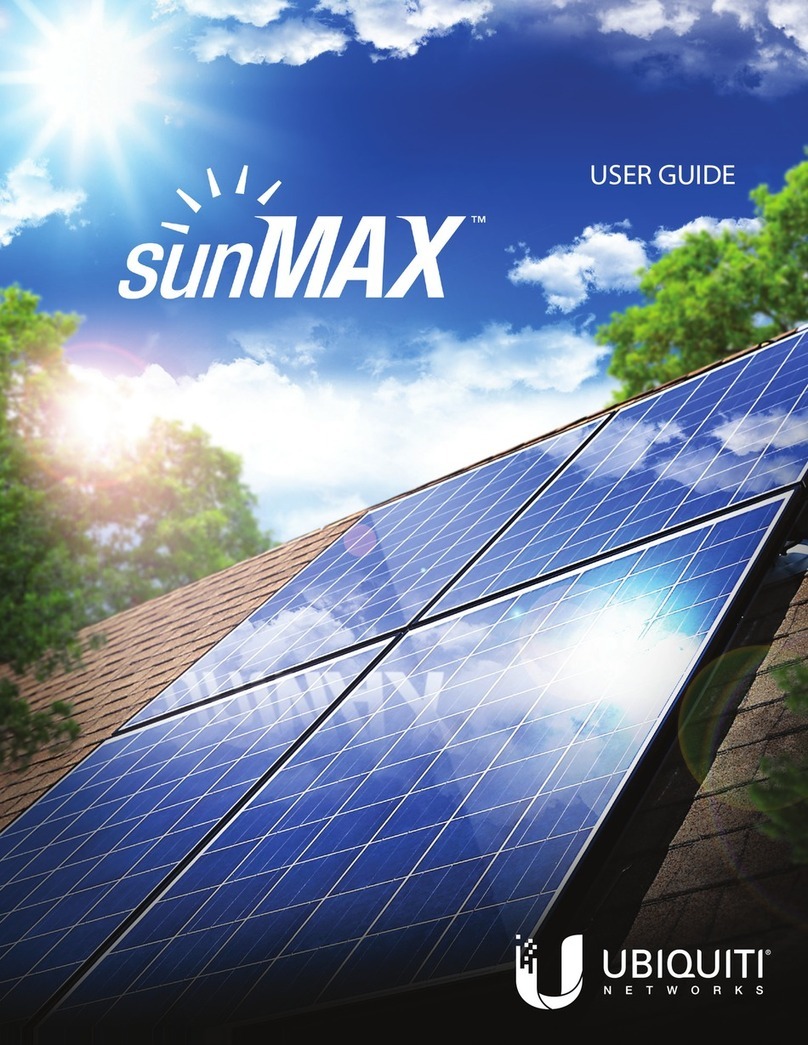
Safety, Installation, and Operations Manual
©2021 TSC PowerHome All rights reserved. Contents subject to change without notice. TSC-MAN-0002 Rev 01, 04-2021
5
High Performance Solar
Each Module has a label providing the following information:
1.Nameplate: describes the product type; Peak power, Max. power current, Max. power voltage, open circuit
voltage, short circuit current, all as measured under standard test conditions; Certications mark, the
maximum system voltage, etc.
2.Serial number: each individual module has a unique serial number. The serial number has 16 digits. The 1st
and the 2nd digits are the year code, and the 3rd is the month code (A, B, C stands for October, November and
December respectively). For example, 121 XX XX XX XXXXXXX means the module was assembled and tested
in January of 2012.
3.2 Conventional Safety
TSC Modules are designed to meet the requirements of IEC 61215 and IEC 61730, application class II. Modules
rated for use in this application class may be used in system operating at greater than 50V DC or 240W, where
general contact access is anticipated. Modules qualied for safety through IEC 61730-1 and IEC 61730-2 and within
this application class are considered to meet the requirements for safety class II equipment.
When Modules are mounted on rooftops, the roof must have a re resistant covering suitable for this application.
Rooftop PV systems should only be installed on rooftops capable of handling the additional weighted load of PV
system components, including Modules, and have a complete analysis of the structure performed by a certied
building specialist or engineer.
For your safety, do not attempt to work on a rooftop until safety precautions have been identied and taken,
including without limitation: fall protection measures, ladders or stairways, and personal protective equipment.
For your safety, do not install or handle Modules under adverse conditions, including without limitation strong or
gusty winds, and wet or frosted roof surfaces.
3.3 Electrical Performance Safety
Photovoltaic Modules can produce DC electricity when exposed to light and therefore can produce an electrical
shock or burn. DC voltages of 30 Volts or higher is potentially lethal.
Modules produce voltage even when not connected to an electrical circuit or load. Please use insulated tools and
electrically insulated gloves when working with Modules in sunlight.
Modules have no on/off switch. Modules can be rendered inoperative only by removing them from sunlight, or by
fully covering their front surface with cloth, cardboard, or other completely opaque material, or by working with
Modules face down on a smooth, at surface.
In order to avoid arcs and electrical shock, please do not disconnect electrical connections under load. Faulty
connections can also result in arcs and electrical shock. So please keep connectors dry and clean, and ensure that
they are in proper working condition. Never insert metal objects into the connector, or modify them in any way in
order to secure an electrical connection.
Also in order to avoid the sand or water vapor entering which may cause a safety issue with the connection, the
modules need to be installed and connected to the combiner box once they are taken out from the carton box,
keep the connectors dry and clean during the installation, if the modules are not be installed within a week, rubber
connector covers shall be added as a protective measure. Note that pollution from sand, dust and water will result
in arcs and electrical shock of connectors. We suggest the customers add rubber connector covers as a protection
